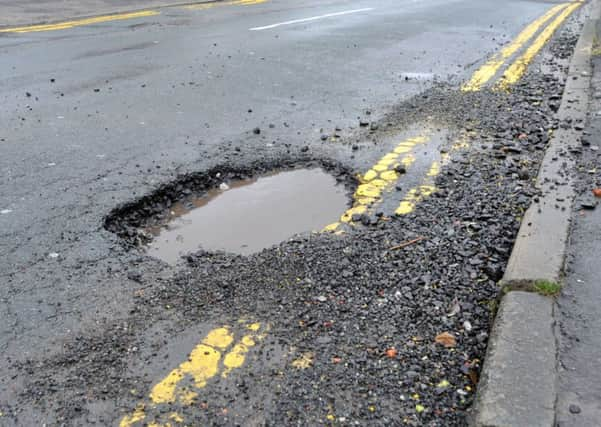Nottinghamshire County Council takes a new approach to potholes and patching


Nottinghamshire is the 11th largest county in the UK and the County Council looks after a network of around 2,600 miles of road, spending more than £2.8m a year on carriageway repairs such as patching and filling in potholes, with an estimated 34,000 potholes being filled during the 2013/14 financial year.
The Council follows a strategy of prevention rather than cure, with programmes of surface dressing carried out to preserve the condition of existing sound road surfaces and resurfacing of worn-out roads, but this still leaves many roads in need of patching, whilst funding is found for more substantial work.
Advertisement
Hide AdAdvertisement
Hide AdWith this in mind, the County Council has developed a new approach to repairing pot holes -- incorporating many of the principles and guidance from the national pot hole review published by the Department for Transport (DfT) – with a report going to next week’s transport and highways committee meeting (July 17th).
The recent award of £2.78m from the Government recognises the value of the Council’s new approach and will help accelerate its introduction with a target of repairing as many as 86,000 pot holes by March next year.
The conventional method of filling pot holes has involved cutting out the surface around the hole, filling it with hot asphalt, rolling the new surface so that it is level and then sealing the patch around the edge so that water cannot get between the old surface and the new. This method is time-consuming, labour-intensive and expensive, but gives a high-quality, neat repair.
Temporary repairs to the worst pot holes until a more permanent repair could be made, also gave the impression of inefficiency because two visits, often weeks apart, had to be made to repair each pot hole.
Advertisement
Hide AdAdvertisement
Hide AdThe new system uses a newly-developed mixture of cold asphalt which comes in bags, can be tipped into the pot hole, compacted with a hand rammer and which then dries to a very hard surface in just two minutes.
Repairs can be made by one person in less than five minutes and can also be carried out in the rain because the material soaks up any water within the pot hole.
The repairs are not as neat as conventional repairs but are high quality, permanent and “right first time”, with no need for repeat visits.
This new cold asphalt material is now being used across the county where pot holes found by highways inspectors during routine inspections are being filled there and then rather than ordering a repair from a conventional patching gang.
Advertisement
Hide AdAdvertisement
Hide AdIn addition, four new “find and fix” teams are now operating across the county, responding to residents reports of pot holes and repairing any found with the new material.
The County Council is also using another new repair method called Nu-phalt which it is using to fix larger areas where there may be a concentration of pot holes and where it would not be efficient to repair them all on an individual basis or where the new cold asphalt is not appropriate because of their size.
In these situations the repairs are batched together and an infra-red unit is used to heat up the road surface around the pothole, mixing the resultant “putty” with a special material and then relaying the mixture. This new material fuses with the adjacent road surface to give a water-tight repair which can be completed within 20 minutes.
“These improved methods are expected to dramatically reduce the time taken to repair most pot holes and create a much more responsive service for residents,” said Coun Kevin Greaves, chairman of the transport and highways committee.
Advertisement
Hide AdAdvertisement
Hide Ad“There are still many locations where it will be more appropriate to use conventional repair methods but, overall, the two new methods will mean many more pot holes can be repaired in a cost-effective way.”
The County Council is encouraging residents to report potholes either online or through its Customer Service Centre, with all such reports being sent straight through to the highway inspector’s i-pad for action – again cutting down the response time for repairs.
Reports can be made online at www.nottinghamshire.gov.uk or by phoning 0800 500 80 80.